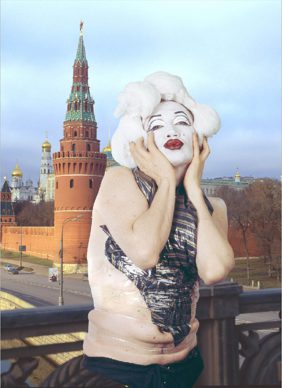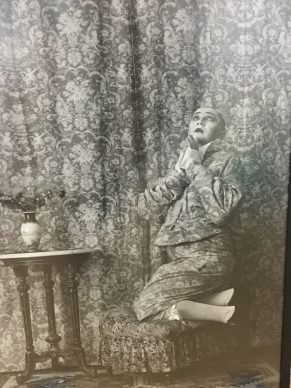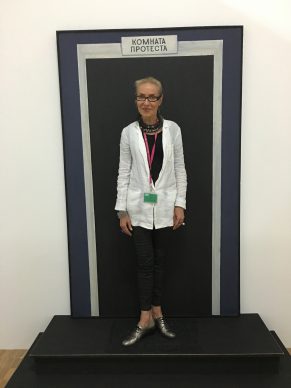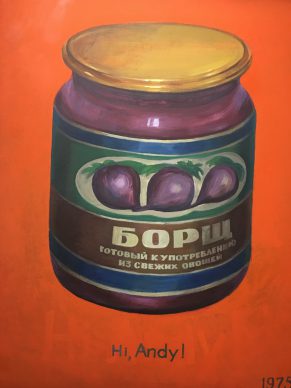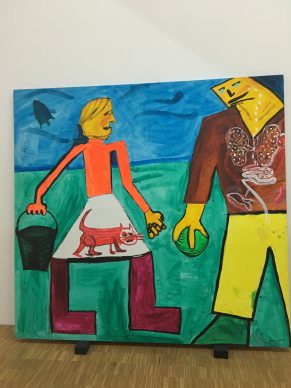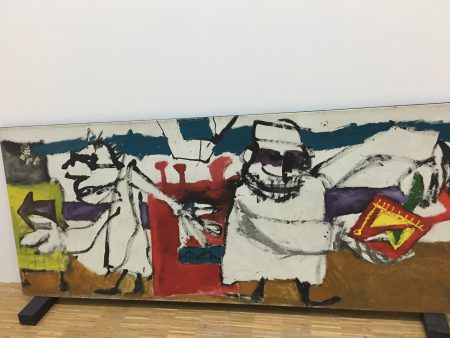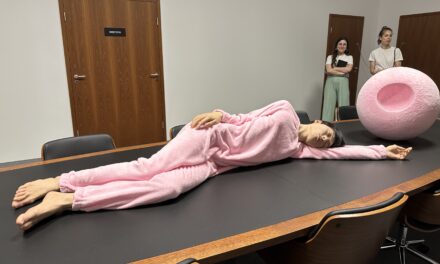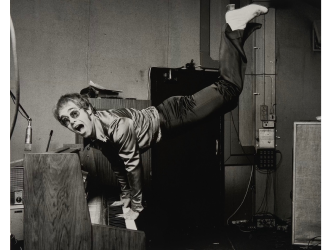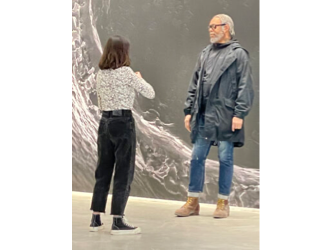It came into existence last year when the Potanin Foundation, belonging to Russian oligarch Vladimir Potanin, the 60th richest person in the world and the richest Russian according to the 2015 Forbes list, contacted the Pompidou Centre to arrange the donation of a number of contemporary Russian works.
The project snowballed and other wealthy Russians collectors such as Ekaterina and Vladimir Semenikhin, currently living in Monaco, and the London-based Igor Tsukanov, teamed up with Potanin. Artists too have personally donated works, as has the culture professional Nic Iljine.
The haul (more than 350 works and documents) is being shown at the Pompidou Centre until 27 March under the title Kollektsia! and it is utterly captivating.
It reveals how since the ‘50s a succession of irreverent and confrontational artists, espousing far-from-conventional styles, worked away clandestinely and without any means of expressing themselves. Performances, actions of various kinds, conceptual art: they escaped the confines of socialist realism through treasures of the imagination.
Then, with the advent of Perestroika in the mid-‘80s, new forms of expression developed.
The French curator of the exhibition Nicolas Liucci-Goutnikov of the Pompidou Centre explained what is so unique about Russian art from this period.
One of the more incredible artists on display is Monroe (Vladislav Mamyshev-Monroe (1969-2013) his pseudonym comes from his fondness for dressing up, including as Marilyn Monroe). A very colourful character from Saint Petersburg, he was the subject of a book by art critic Olesya Turkina (1). She spoke about him last May when I was in Russia.
Consequently there is much to celebrate about this donation.
At the same time, it is hard to avoid asking questions.
In fact Vladimir Potanin is a serial donor who made his fortune through the acquisition in 1993 of nickel giant Norilsk Nickel.
He apparently loves to distinguish himself through his largesse in art.
In 2002, for example, he presented the Hermitage Museum with one of the famous versions of ‘Black Square’ by Malevich, a work which is emblematic of Russian modern art.
He is one of the trustees of the Guggenheim Museum in New York and spent nearly $2 million to bring the ‘Russia!’ exhibition to the Guggenheim Museum in New York in 2005-2006.
He is also one of two Russians to participate in the well-known ‘Giving Pledge’, which works with the largest fortunes in the world to donate a major part of their wealth to philanthropy. (http://givingpledge.org)
The Pompidou Centre president, Serge Lasvignes, does not conceal his satisfaction.
Nic iljine who donated the sole canvas by Ilya Kabakov (the contemporary Russian artist who fetches the highest prices on the market) in the Kollektsia! collection explains his involvement:
As for Olga Sviblova, the very active director of the Multimedia Art Museum in Moscow who is the other curator of the Kollektsia! exhibition, she reveals, installed in a Mironenko “Protest room” how this collection of more than 350 pieces was assembled in scarcely a year.
This “offshore” donation comes at a time when the Russian contemporary art scene is in dire straits.
Without mentioning the very visible Pussy Riot, it seems that the Russian church exerts a coercive influence over artistic expression.
Political power, for its part, is profoundly indifferent to contemporary output according to several well-informed sources.
Nowadays, when artists get the chance, many are going into self-imposed exile in Berlin or New York.
The Russian art market is lifeless.
As for exhibition venues, they are few and far between. In a country as large as Russia, only the Garage in Moscow and the Hermitage in Saint Petersburg are currently exhibiting world-class art.
Other noteworthy efforts are occasionally seen at the V-A-C Foundation and Moscow Museum of Modern Art.
Kollektsia! offers a breath of fresh air at a time when Russia’s contemporary art scene is suffering from asphyxiation in its homeland.
It’s very welcome.
https://www.centrepompidou.fr/
(1) The life of the remarkable Monroe. Olesya Turkina, Victor Mazin ( in english). Novy museum. Saint Petersburg. 2014
Support independent news on art.
Your contribution : Make a monthly commitment to support JB Reports or a one off contribution as and when you feel like it. Choose the option that suits you best.
Need to cancel a recurring donation? Please go here.
The donation is considered to be a subscription for a fee set by the donor and for a duration also set by the donor.

